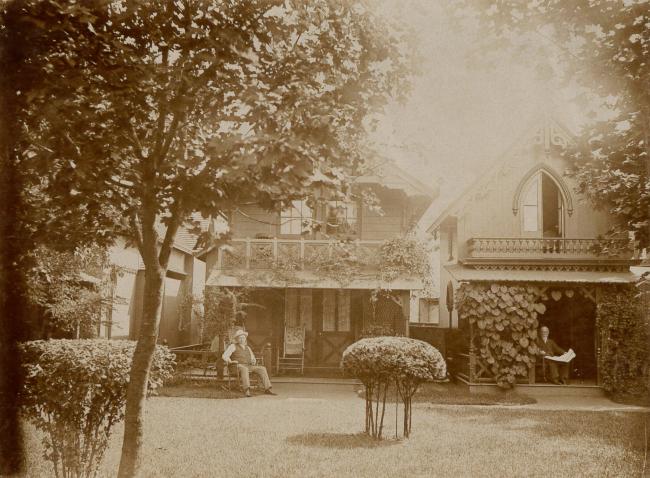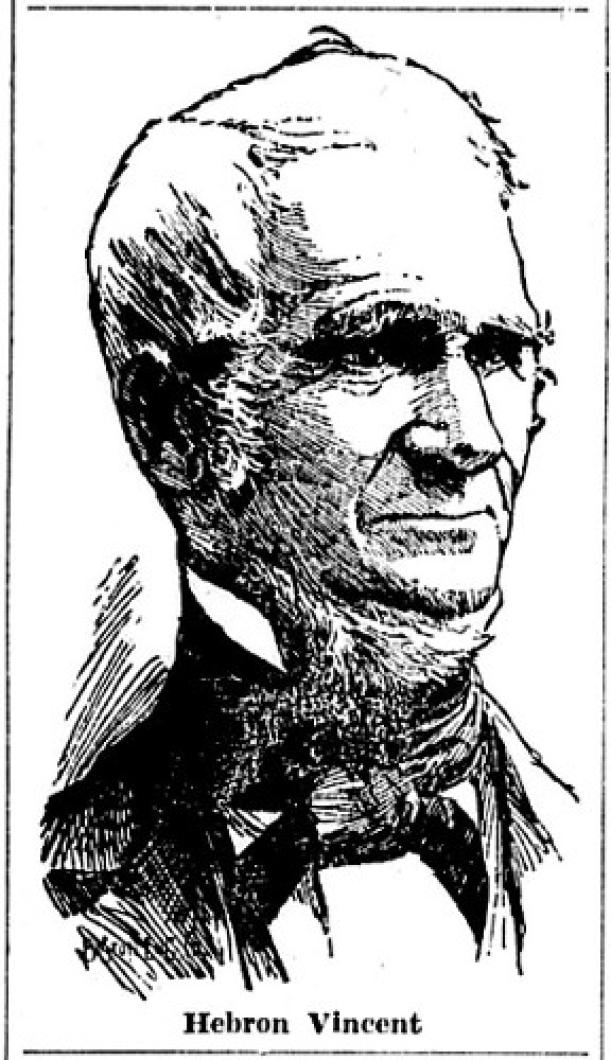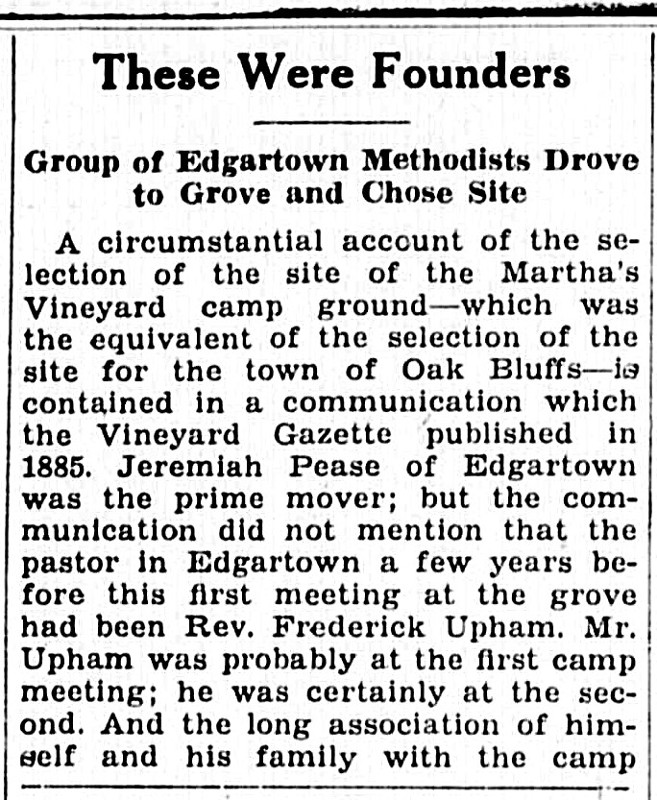A circumstantial account of the selection of the site of the Martha’s Vineyard camp ground - which was the equivalent of the selection of the site for the town of Oak Bluffs - is contained in a communication which the Vineyard Gazette published in 1885. Jeremiah Pease of Edgartown was the prime mover; but the communication did not mention that the pastor in Edgartown a few years before this first meeting at the grove had been Rev. Frederick Upham. Mr. Upham was probably at the first camp meeting; he was certainly at the second. And the long association of himself and his family with the camp meeting suggests that he may have exercised considerable influence in the formative period of what was, in 1835, a new venture.
The 1885 communication tells the story as follows:
The site of this famous encampment was first brought to the notice of the members of the Edgartown Methodist Episcopal Church by a fellow member, the late Jeremiah Pease, Esq., who was accustomed to hold religious meetings at Eastville, about a mile distant. He had carefully examined the grove, and had marked one of the venerable old oak trees at a place he thought appropriate for the Preacher’s Stand. He so repeatedly spoke to his brethren about holding a camp-meeting there, that sometime in the summer of the year 1835 - fifty years ago - it was decided that a number of them should visit the grove together and determine whether the place was eligible, and if found so to be, that they should take the initial steps to provide for the holding of the proposed camp-meeting.
Six men made the trip together in carriages, a distance of seven to eight miles. Besides Thomas W. Coffin, Chase Pease, Frederick Baylies and Hebron Vincent, citizens of Edgartown, there were two clergymen, Rev. Daniel Webb, Presiding Elder of the District, and Rev. James C. Bontecou, then pastor of the Edgartown M. E. church.
All Agreed on the Site
These six men all agreed that the place was indeed an excellent site for a camp-meeting; and, finding the tree marked by Jeremiah Pease, - who was unable that day to accompany them - they decided that there the stand should be built.
Returning together through the cart-path through which they had entered the grove, they came to a clear spot by the side of the way, not far from the dwelling-house of the late Samuel Butler. Here they all sat down, in company with the late William Butler, Esqur., who then owned the grove. Here the subject of a lease was named, its importance and its conditions were freely discussed and agreed upon between them, all assenting. The lessees were decided upon; but there being no conveniences for writing, the document was not then executed. It is not certain who these lessees were, as no record of the lease appears upon the Land Records of the county. It is probable that Mr. Baylies may have been one of them, and that the original lease was among the papers left by him.
These six men, all presumably having equal voice in this matter of establishing the camp-meeting, having filled up the measure of their days, are - with a single exception - numbered with the departed, “Asleep in Jesus.” Hebron Vincent survives, still active, vigorous and useful. From the very first, he was intimately associated with the camp meeting. He was its first secretary, its chronicler, and its historian. He has labored long, heartily and effectively, to build it up. To promote its growth and usefulness, by all means in his power, has been his delight. Long may he live to bless the future as he has the past - a friend and a helper in every good cause and every good work. And when the summons comes to him, which comes to all, may it be said of him as it was of Moses, “his eye was not dim, nor his natural force abated.”











Comments